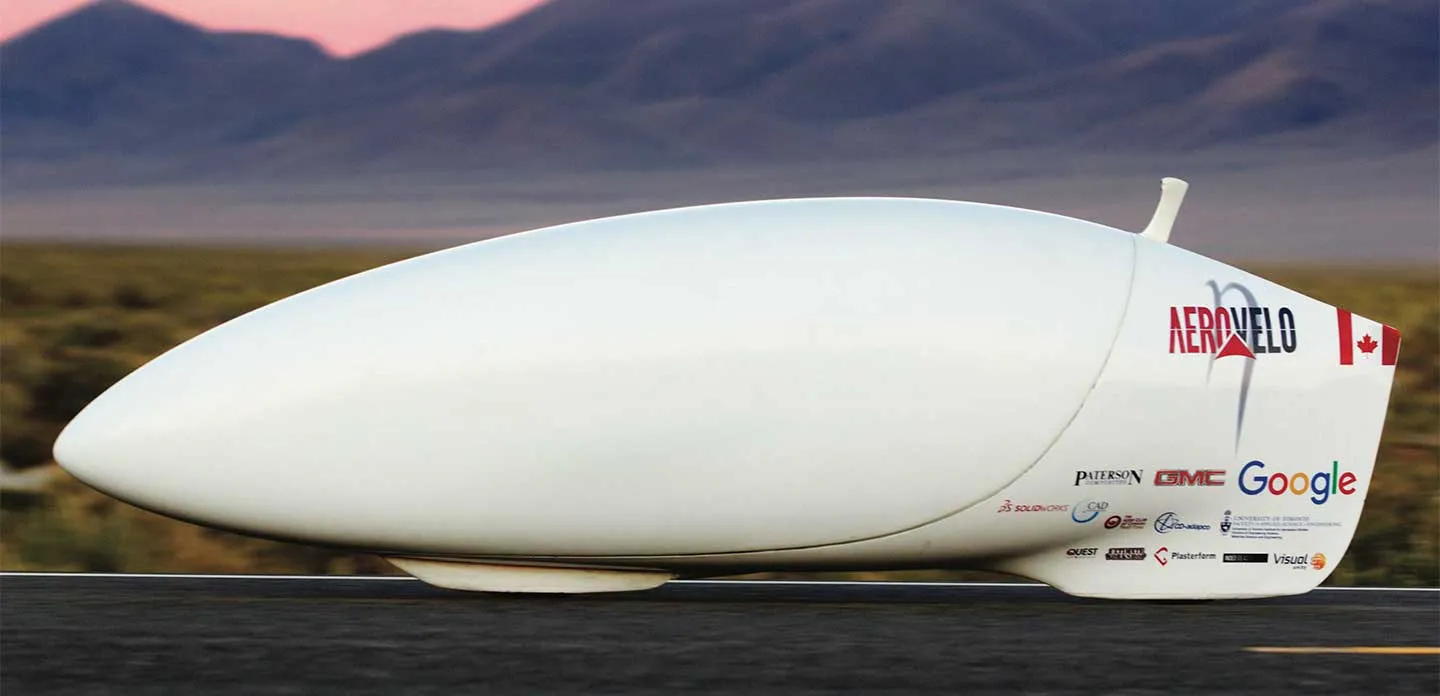Co-founders Todd Reichert and Cameron Robertson established Aerovelo to make the impossible—human-powered flight and human-powered speeds approaching 100 mph—possible. Combining Reichert’s passion for athletics and aerodynamic design and Robertson’s passion for structures and materials, Aerovelo is committed to inspiring public interest in science, technology, and environmentally conscious engineering. The company has undertaken a series of human-powered vehicle projects that have attracted a diverse, passionate group of individuals with a desire to do something incredible. The core of the design teams has been primarily engineering students from the University of Toronto—Reichert and Robertson are both alumni—and young professionals, but the projects would not have been possible without the extended network of a community of volunteers, friends, and family.
Aerovelo also needed 3D design and engineering tools to invent, design, and build the human-powered bike, helicopter, and ornithopter (an aircraft that flies by flapping its wings) that represent the company’s body of work. According to Vice President/Structures Robertson, Aerovelo needed 3D CAD and computational fluid dynamics (CFD) analysis software not only to create these vehicles, but also to take them into the record books.
“It would not have been possible to effectively design vehicles like the human-powered bike without 3D CAD,” Robertson explains. “The timelines and budgetary constraints that we work under are not really feasible without the speed, power, and automation that come with computational tools. We also work closely with students from the University of Toronto and need a common development platform to communicate and manage the work.”
Because the founders had used SOLIDWORKS software, and SOLIDWORKS is the CAD software taught at the University of Toronto, the combination of SOLIDWORKS Premium design/ analysis and SOLIDWORKS Flow Simulation CFD analysis software was the obvious choice.
“I’d always found SOLIDWORKS to be easy to use, and the students who work with us know it,” Robertson says. “We also liked the fact that SOLIDWORKS Flow Simulation software integrates inside the modeling platform.”
FAST DESIGN, EVEN FASTER DESIGN CHANGES
Aerovelo first developed the Snowbird human-powered ornithopter, which sustained altitude and airspeed for 19.3 seconds in 2010, becoming the world’s first successful humanpowered ornithopter. Next came the Atlas human-powered helicopter, which won the AHS Igor I. Sikorsky Challenge and its $250,000 prize in 2013, thanks to its record-breaking 64-second flight. Aerovelo upped its use of SOLIDWORKS tools for its next challenging project: the development of the recordsetting Eta speedbike.
“SOLIDWORKS enables us to design the vehicle quickly and then make necessary design changes even more quickly,” Robertson explains. “For example, we used SOLIDWORKS to modify and relocate the derailleur and shifter—using SOLIDWORKS tools to determine the best locations. We were able to get the composite faring design close to optimal, using tools like zebra stripes and surface curvature indicators, and SOLIDWORKS CFD performance analysis, and then we built and hand-finished it to dial it in.”
